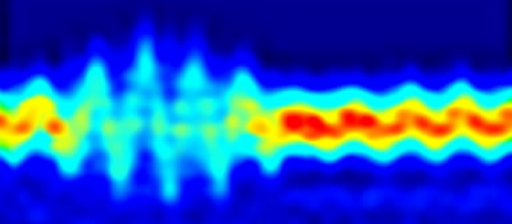The shortest artificial light burst in history
July 2, 2012

Attosecond laser pulse (credit: Imperial College London)
An advanced experimental system that can generate attosecond bursts of extreme ultraviolet light — the shortest controllable light pulses available to science — has been developed by researchers at Imperial College in London.
An attosecond is 10-18 second, or a billionth of a billionth of a second. With these pulses, it’s possible to measure the dynamics of electrons in matter in real-time.
Advances in attosecond science may enable scientists to verify theories that describe how matter behaves at a fundamental level and how certain important chemical reactions — such as photosynthesis — work. Additional advances may eventually lead to the control of chemical reactions.
“Understanding how matter works at the level of its electrons is likely to lead to new scientific tools and to novel technologies,” said Felix Frank, of Imperial College and one of the authors on the paper forthcoming in the American Institute of Physics’ journal Review of Scientific Instruments. “In the future, this knowledge could help us to make better drugs, more efficient solar cells, and other things we can’t yet foresee.”
The researchers were able to produce these pulses by a process called high harmonic generation (HHG), using a high-power femtosecond laser system (femtoseconds are 1,000 times longer than attoseconds).
The near infrared femtosecond laser pulses are corralled through a waveguide and a series of specialized mirrors, causing them to be compressed in time. With their waveforms precisely controlled, these compressed pulses are then focused into a gas target, creating an attosecond burst of extreme ultraviolet radiation.
The experimental system developed by the researchers is able to accurately measure the attosecond pulses and deliver them to a variety of experiments in conjugation with other precisely synchronized laser pulses.